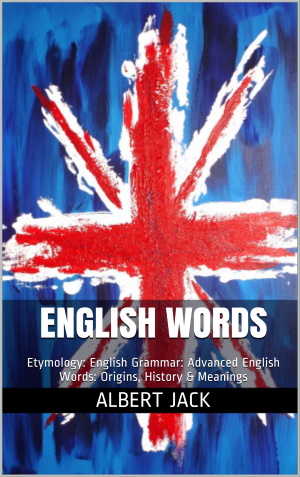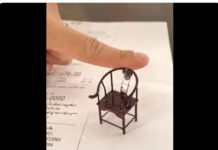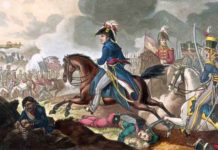Bollocks is a good old Anglo-Saxon word of Germanic origin, which is nowadays used mainly as a relatively mild swearword but technically just means ‘testicles’ (see also avocado, knacker). In both senses of the word, it somehow only sounds correct when said with a British accent.
Perhaps surprisingly, the word appears in John Wycliffe’s 1382 translation of the Bible, in which we learn that: ‘Al beeste that kitt and taken a wey the ballokes is, ye shulen not offre to the Lord.’
Which translates into modern English as: ‘Any beast that has had its bollocks taken away [been castrated] should not be offered as a sacrifice to the Lord.’ By the eighteenth century, ‘bollocks’ and its close cousin ‘ballocks’ had somehow become slang terms for ‘clergyman’, suggesting that what some of them preached from the pulpit perhaps led to the nickname.
One of the most versatile old words in the English language, ‘bollocks’ can also be used as an expression of dismay or frustration – ‘Oh, bollocks’ – or a term of appreciation: ‘That really is the bollocks.’ The word’s most exciting role in its very long history, however, was at the centre of a notorious court case in relatively recent times.
In 1977, the Sex Pistols ruffled a few establishment feathers with the release of their debut punk rock album, Never Mind the Bollocks, Here’s the Sex Pistols. The band and the manager of a Nottingham record shop who had dared to display the album in his window were immediately sued.
The high-profile defence lawyer John Mortimer QC, creator of Rumpole of the Bailey, successfully demonstrated that the word ‘bollocks’ had for centuries been in common use as slang for a ‘priest’, and that it usually simply meant ‘nonsense’. The court was forced to publicly concede that the word was not to be considered obscene. Although admittedly other words for ‘nonsense’ may not have had quite the same ring.
Bloomers are a big old pair of lady’s pants that are worn more for comfort than for sex appeal, especially the baggy ones. But, believe it or not, there was a time when a pair of bloomers was considered high fashion.
Bloomers were invented in the mid-nineteenth century by Elizabeth Smith Miller (1822–1911) of New York state, with the intention of preserving a lady’s modesty while engaged in activities such as horse riding and cycling. Worn below the skirt, these pantaloons were long baggy pants, based on traditional Turkish trousers, which narrowed to a cuff at the ankle. They took a while to catch on and were widely ridiculed by the press, although when prominent women’s rights campaigner Amelia Jenks Bloomer (1818–94) started wearing them in the early 1850s, bloomers – as they became known after she enthused about them in her magazine The Lily – grew in popularity.
On a related note, the Suffragettes took their name from the word ‘suffrage’, ‘the right to vote’, which comes from the Latin suffragium, ‘voting tablet’.
The history of the word barracking and indeed its definition have become confused over the years, which is hardly surprising since both Australia and Northern Ireland stake a claim to it.
We in the civilised English-speaking world understand the word ‘barrack’ to mean ‘jeer’ or ‘make rude comments in an attempt to interrupt’, but in the land down under, where the word actually originated in the 1870s, it means the exact opposite: ‘to cheer and support’. The story goes that, in the mid-nineteenth century, supporters of the Victoria Barracks team at South Melbourne Cricket Ground would be greeted with howls and jeers of ‘Here come the barrackers’ by opposition supporters.
It would seem that Australian sports fans regarded heckling the opposition as a show of support for their own team, which is how ‘barrack’ ended up meaning quite the opposite down under to what it does here, where barracking the opposition is just plain old barracking the opposition.
A separate Australian-based suggestion for the etymology of ‘barrack’ is that it comes from the aborigine barak, ‘banter’, although the first recorded use of the word in print is in the sense of ‘jeering and interrupting’.
In a popular 1878 publication called The Pilgrim: A Sensational Weekly Pamphlet, printed in Sydney, we find: ‘Douglas mumbled over a petition for the edification of the assembled roughs and larrikins, but was greeted with noisy insults and cries of “cheese your barracking and shut up”.’ (Larrikin – or ‘little Larry’ – incidentally, used to mean ‘mischievous youth’ in Australia and New Zealand, but has since taken on the meaning of thug.)
Meanwhile, in Northern Irish dialect, ‘to barrack’ is ‘to brag’, which is close enough to the modern meaning to be a credible alternative.
Rigmarole, denoting a tediously complex procedure, is an unusual-sounding word from the mid-eighteenth century, while the origin of the term goes back well over 700 years. It dates to 1296, when the Scottish noblemen signed deeds of loyalty to King Edward I of England. They all fixed their seals to the deeds, which collectively became known as the Ragman Roll or Ragman’s Roll, either in reference to the ribbons (or ‘rags’) attached to some of the seals or to an earlier census collector called Rageman or Ragemund. Around the same time, ragman was a slang word for the devil (see ragamuffin), which may well have been the Scots’ nickname for the hated English king.
Either way, there is little doubt that the process of getting the Scots to sign deeds of loyalty to England, and subsequently having to assemble the deeds into one forty-foot-long document for the king, was quite some rigmarole.
I have often wondered why we call a level of a building a storey when it has nothing to do with the telling of tales, so I was interested to stumble across an explanation that links the two.
‘Story’, of course, means a ‘narrative of fictitious events’, and it is derived from the ancient Greek historia, ‘account of events’. Historia is also the root of our ‘history’, meaning ‘factual account’, from which we can infer that the difference between ‘history’ and ‘story’ is the difference between fact and fiction. Following this so far? Now for the tricky bit.
Back in the fourteenth century, before the Caxton printing press changed everything, the word ‘story’ was used in architecture in the sense that stained-glass windows and stone carvings or sculptures on the outsides of buildings carried stories in their theme. The more rows of pictures on a building, the more stories it was able to tell. This kind of architectural story gradually developed into the more mundane ‘storey’ of modern times: an entire level of a building. I’m glad I found that out, as I can now view my local multi-storey car park with a whole new respect.
To ride roughshod over someone is to treat them harshly and without consideration for their feelings. Horses that are roughshod have the nails protruding from their shoes, something that used to be done deliberately in order to provide extra grip in wet or icy conditions. But to be trampled on or kicked by a roughshod horse is a little uncomfortable, to say the least. In the eighteenth century, it was common for cavalry soldiers from many countries to ensure their horses were roughshod or had other sharp objects attached to their hoofs, the idea being that the horses would cut and damage enemy mounts with their sharp shoes. The practice ultimately resulted in horses doing more damage to themselves than to others, and it was quickly phased out.
A horse that is cantering is moving at a speed somewhere between a trot and a gallop. And the word is only ever used in association with horses; dogs and cats never canter, and neither do lions and elephants. When the Anglo-Saxons invaded the southern part of England in the fifth century, taking over cities and towns previously occupied by the retreating Roman Empire, they gave the major town of Durovernum Cantiacorum a new name, Cantwaraburg, which meant ‘the town of the men of Kent’. It has since become known as Canterbury. Kent switched from paganism to Christianity at the end of the sixth century, largely thanks to a Benedictine monk called Augustine (later St Augustine), who had been sent over by Pope Gregory I for that very purpose, and Canterbury’s place as the seat of the Christian church in England was established. (There is a point to all of this, I promise.)
A few centuries later, in 1170, Archbishop of Canterbury Thomas à Becket was hacked to death at the altar of Canterbury Cathedral by four renegade knights from Henry II’s court, who had supposedly taken the king’s throwaway comment ‘Will no one rid me of this turbulent priest?’ quite literally. The cathedral became a shrine to the holy martyr almost immediately, with pilgrims travelling from all over England to visit the scene of the crime.
One of the most famous pilgrimages to Canterbury, of course, is documented in Geoffrey Chaucer’s Canterbury Tales, written at the end of the fourteenth century. The relaxed pace suitable for long-distance riding that would have been adopted by the Wife of Bath, the Knight and the many other real-life pilgrims later became known as a ‘Canterbury gallop’.
The Sport of Kings (horse racing to you and me) became incredibly popular in Britain in the early eighteenth century, by which stage ‘Canterbury gallop’ was an established phrase.
It was used outside the sport – carriage drivers, for instance, always travelled at a Canterbury gallop – but within the horse-racing community the expression was gradually abbreviated to ‘Canterbury’ and then ‘canter’, the word we still use today. I doubt this is quite what Pope Gregory I had in mind, however, when he sent Augustine over to Kent.
The thoroughbred horses that are nowadays used in racing are cross-breeds of English mares and Arab horses imported to England around the turn of the eighteenth century. At the same time as horse racing was growing popular in England, it was also becoming something of a national pastime in Ireland, and the first steeplechase – literally a race from one church to another – was arranged in County Cork in 1752.
The race was the result of a wager between Cornelius O’Callaghan and Edmund Blake as to which man owned the better horse, and it was run cross-country over the four miles between Buttevant and Doneraile.
The modern steeplechase course has fences, ditches and other obstacles scattered along it to make it appear ‘cross-country’, but it doesn’t replicate what supposedly happened at the end of the very first race: the winner rode straight into the church at Doneraile and down the aisle, just as the vicar was holding a funeral service. – Albert Jack
Albert Jack AUDIOBOOKS available for download here

English Word History, Origins & Meanings









































